Browse other blog categories
Ultimate Guide To Queensland
When planning your trip to Queensland’s sunny shores, you’re bound to have a near-endless list of activities and attractions to fit into your itinerary so it’s crucial to map out your route ahead of time. To help you create the perfect plan for your dream getaway we’ve put together our complete guide to Queensland, including everything from how to get there, the best times of year to visit and the top tourist attractions.
We’ve broken the info down into digestible sections so that you can easily find the regions/activities that most pique your interest.
South East Queensland (SEQ)
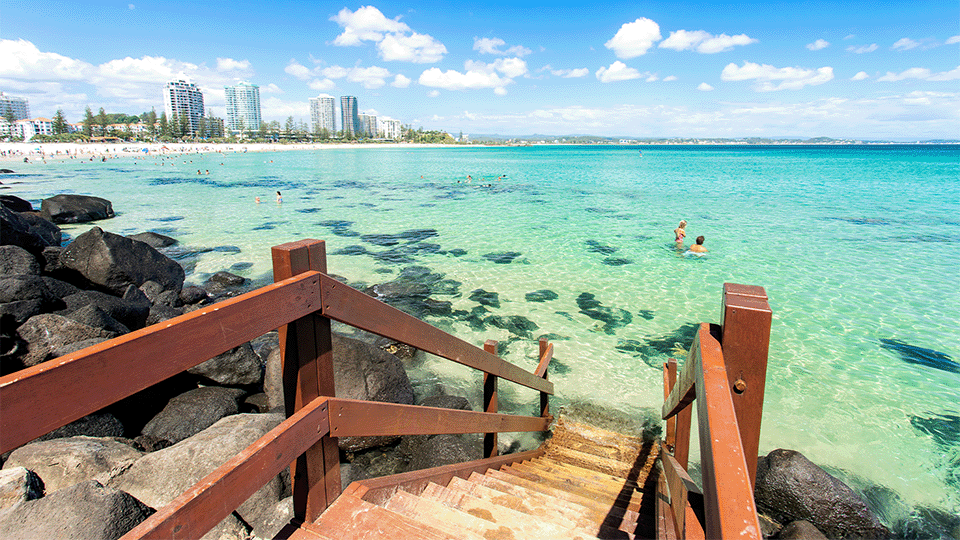
This region includes some of the most beautiful scenery in all of Australia, as you travel through Brisbane (Queensland’s capital), the Gold Coast, the Sunshine Coast, and Noosa.
Getting there
There are two major international airports in the region, Brisbane Airport and Gold Coast Airport. If you’re already in the region, you can travel by rail, bus, or by renting a car and driving.
Best times to visit
We recommend hitting up this region from March to May (which is autumn in Australia). The temperatures are mild with a little bit of rainfall later in the season. Other good times of year are winter (June to August) and spring (September to November) because the weather is drier (please note that these seasons are more popular with tourists, so it might be more difficult to find lodging – especially during the Brisbane Festival held in September). If you don’t mind getting a little wet, December through March might bring rain and humidity, but there will be fewer tourists to crowd out the attractions you want to visit. Extra tip! These areas are popular for families on school holidays so it’s best to avoid these peak times if you can – December to January in particular.
Things to see & do
If you're looking for the best activities to experience in South East Queensland, check out our blog Top 10 things to do in South East Queensland.
Brisbane: Get incredible views of the city at Brisbane Lookout, Mount Coot-tha or atop the Story Bridge. Brisbane also has many relaxing outdoor spaces, such as Roma Street Parkland and the City Botanic Gardens. For a look at some regional history, go to the free Museum of Brisbane or check out some artwork at the Queensland Art Gallery and Gallery of Modern Art (QAGOMA). To get a full view of the city, jump on a CityHopper tour boat that travels along the Brisbane River.
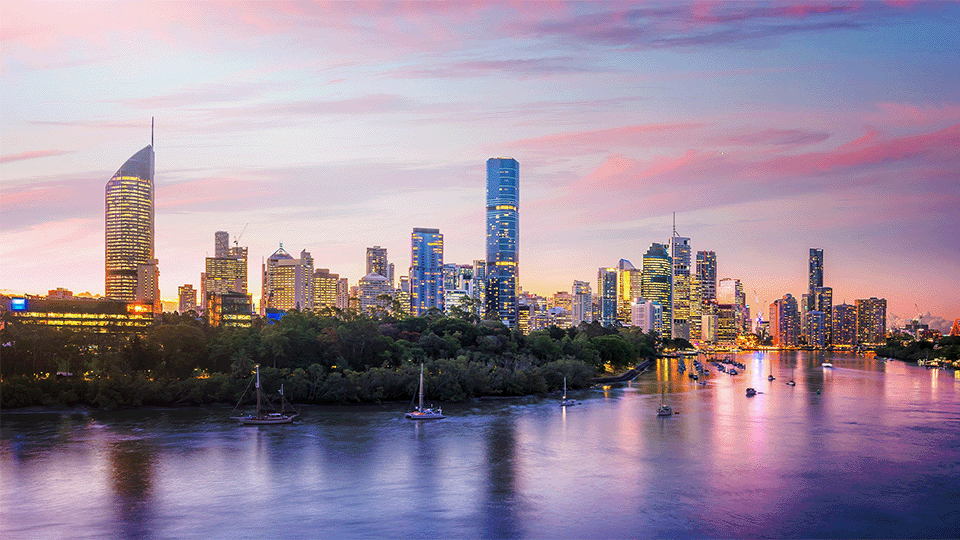
The Gold Coast: Get your fill of nature with a view of the ocean from Tamborine Mountain or stroll along the sand at the picturesque Surfers Paradise Beach. If you’d like to grab some pics with adorable animals, we recommend the Currumbin Wildlife Sanctuary as an interesting way to learn more about Australian wildlife. Besides the many prime surfing spots, the Gold Coast also offers several theme parks for the more adventurous folks out there.
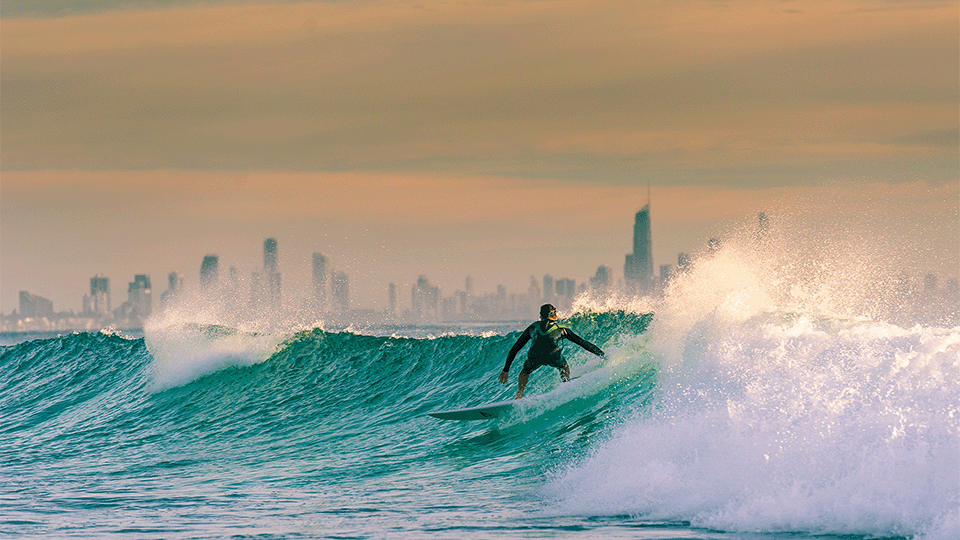
The Sunshine Coast: There’s so much stunning nature to view along the Sunshine Coast, including the Caloundra beaches and Pumicestone Passage, as well as the gorgeous Glass House Mountains and Rainbow Beach. Don’t miss The Big Pineapple, an observation deck that provides some great photo ops.
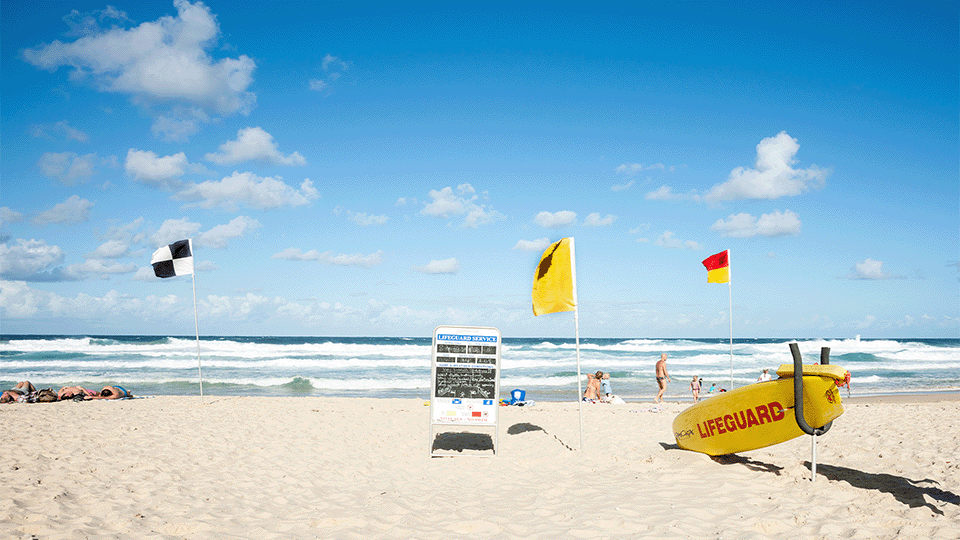
Noosa: Noosa is a seaside resort town on the Sunshine Coast. There are beautiful trails to hike in Noosa National Park (home to lots of koalas around Tea Tree Bay). You can also explore the Noosa Everglades by kayak or boat whilst looking for native birds and wildlife, or just lounge on the sand at the popular Noosa Main Beach.
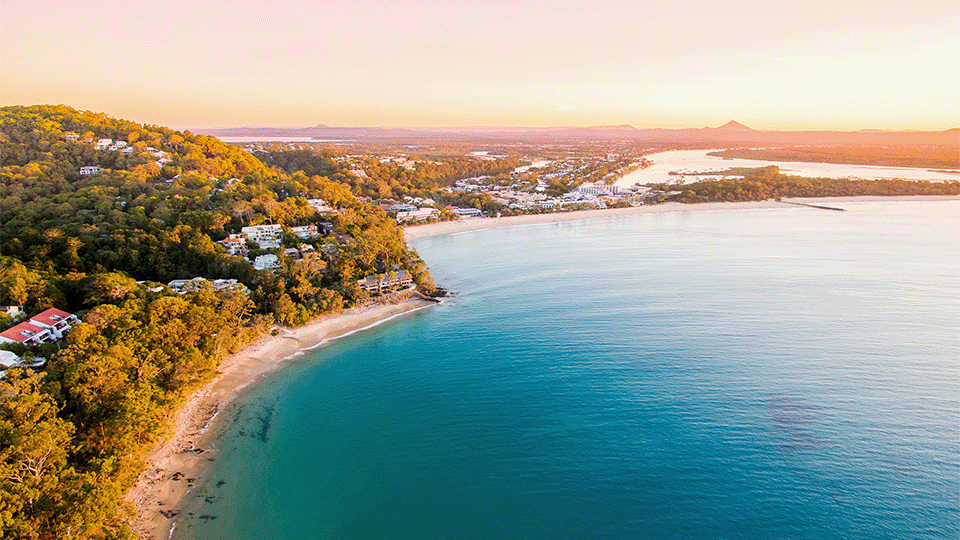
Far North Queensland (FNQ)
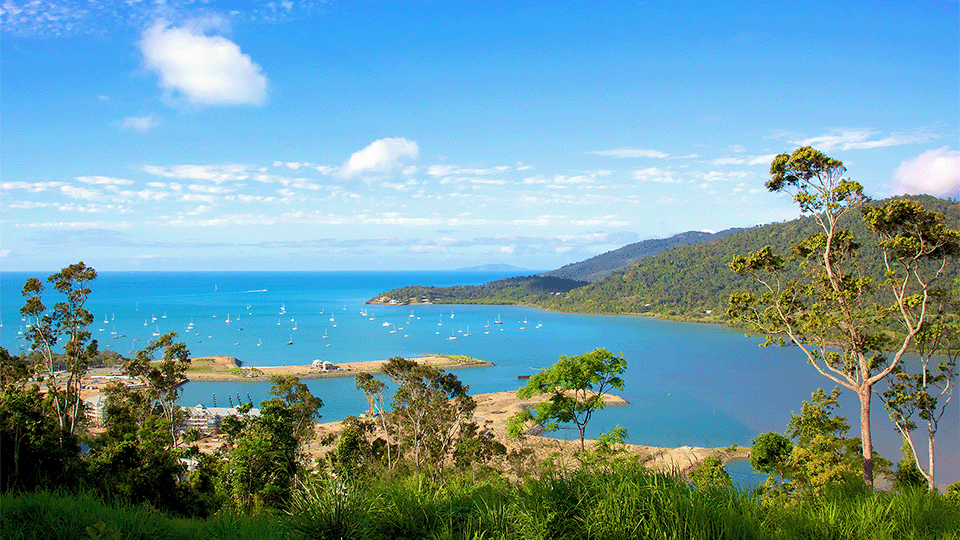
This region covers a variety of famous Australian landmarks, including the Great Barrier Reef and Cairns.
Getting there
The easiest route is to fly into Cairns (which has both domestic and international flights). Often people opt to rent a car once they arrived in the area; as long as you’re comfortable driving around, this can be a good choice if you’d like a lot of flexibility in your travel plans.
Best times to visit
We recommend heading to FNQ during April through September. Generally, temperatures stay around 25-31 degrees throughout the year, so you don’t have to worry about extreme heat or cold. However, the driest months are June to October, so if you’d like to completely avoid the rain, your best bet is to head to FNQ during this time. Additionally, it’s a good idea to steer clear during school holidays since this is a popular spot for holidaying local families. January through May is the region’s wet season, so you should pack for intermittent heavy rainfall (and prepare for the remote possibility of a tropical cyclone) if you plan on travelling at this time.
Things to see & do
Port Douglas: This town is a sophisticated yet quaint rainforest village that is popular for those visiting both the Daintree Rainforest and the Great Barrier Reef. We love to send our clients to Four Mile Beach for the gorgeous scenery and the Wildlife Habitat for an up-close-and-personal look at some of the animals that are native to the region. Of course, there are plenty of snorkeling and swimming opportunities in the area as well.
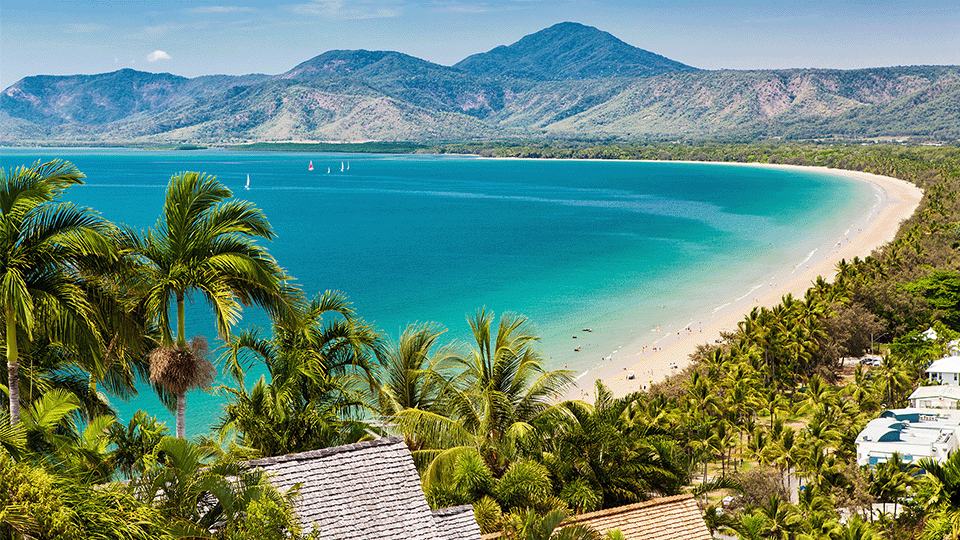
Cairns: The central hub of this region, enjoy a nice swim at the Cairns Esplanade Lagoon or a leisurely walk on the Boardwalk (with a bunch of restaurant options). For glimpses of nature, check out the Cairns Botanic Gardens or the Cairns Aquarium to see everything from butterflies to stingrays. If you’re in the mood for a truly unique and educational experience, head to the Tjapukai Aboriginal Cultural Park to learn more about Australia’s indigenous people.
Daintree Rainforest: This rainforest measures about 1,200 square kilometres, making it the largest continuous area of tropical rainforest on the Australian continent. You can take part in a two-hour Grand Fan Palm Gallery Tour, which includes visiting the Grand Fan Palm Cathedral (an amphitheatre of fan palms in the heart of the forest) or the four-hour Greater Wilderness Experience. If you’re lucky you might spot a rare cassowary bird or even a tree kangaroo. For those who are feeling more adventurous, you can even try your hand at jungle surfing through the trees!
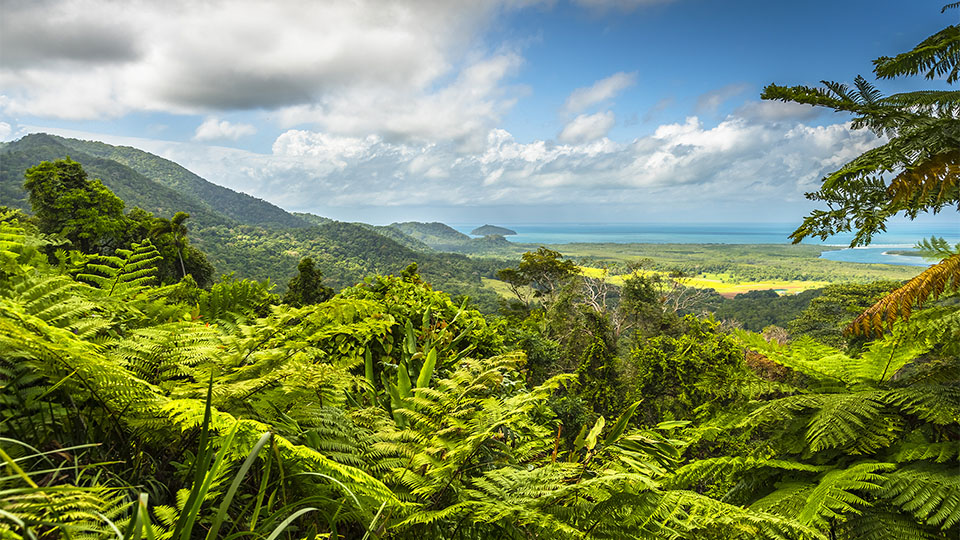
The Great Barrier Reef (GBR): One of the great wonders of the world, the GBR is the largest living thing on Earth (it’s even visible from space!). The 2,300-kilometre-long ecosystem is made up of thousands of reefs and hundreds of islands created from over 600 different types of coral. It’s also one of the best places in the world to see wildlife (fish, starfish, turtles, dolphins, sharks, etc.) up close in their natural habitat. You can explore the GBR in a variety of ways, including (but not limited to) scuba diving, snorkelling and reef walks. Our tip: help protect the coral by choosing reef-safe sunscreen.
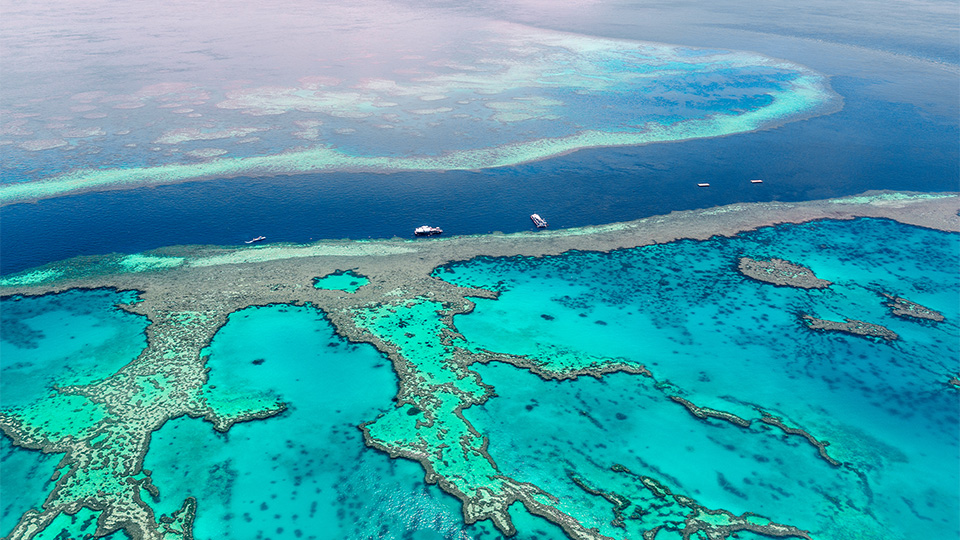
Thinking of visiting the Great Barrier Reef? Check out our guide to the Great Barrier Reef to make sure you're prepared for the journey!
Green Island: Located on the inner Great Barrier Reef just off Cairns, Green Island is easy to get to for both day trips or longer stays. Spend your time snorkelling, diving, taking a glass-bottom boat tour, or just relaxing on the beach.
Fitzroy Island: Also located just off the coast from Cairns, Fitzroy Island is one for nature lovers. Spend the day hiking and taking in the beautiful views from the top of the island, or snorkelling the beautiful waters looking for clown fish or sea turtles. There is also a turtle rehabilitation centre on the island that you can visit, and not to be missed is a visit to Nudey Beach, voted Australia’s best beach in 2018.
Kuranda Village: This mountain village near Cairns is best known for the Kuranda Scenic Railway, which offers spectacular views of the rainforest, ravines, and waterfalls within the Barron Gorge National Park. Built between 1882 and 1891, with 15 handmade tunnels and 37 bridges, you’ll be able to marvel at this engineering feat. We recommend taking the scenic cableway up to the village and the scenic railway down for the best views and experiences. We also like to recommend the Australian Butterfly Sanctuary for a particularly memorable visit in Kuranda.
Atherton Tablelands: One of our favourite things to visit is the Chillagoe-Mungana Caves National Park. Here you can visit 400-million-year-old limestone caves with indigenous rock art on ranger-led tours. There’s also the historic village of Herberton, which offers over 60 restored and relocated heritage buildings for a more educational type of visit.
Whitsunday Islands
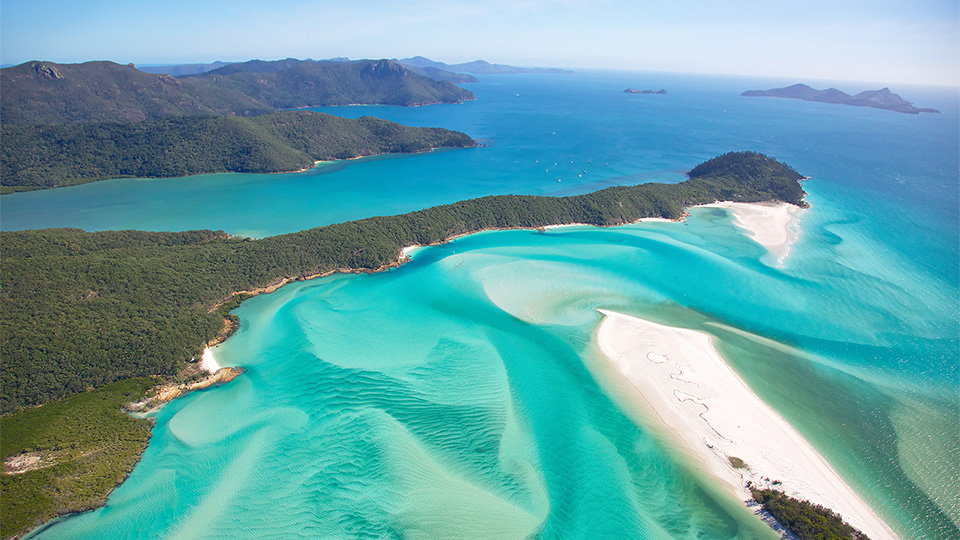
The 74 Whitsunday Islands are on the northeast coast of Queensland and the Great Barrier Reef. They’re not near Cairns, so you do need to take a domestic flight or drive several days to get between the two. Most of the islands are uninhabited, but the rainforest, hiking trails, and beautiful beaches still attract many travellers. There are four resort islands under operation: Daydream Island, Hamilton Island, Hayman Island, and Long Island, and the main towns on the mainland are Airlie Beach, Bowen, Collinsville, and Proserpine.
Getting there
If you want to fly directly to the islands, you can fly into Hamilton Island or the Whitsunday Coast Airport, Proserpine, direct from Brisbane, Sydney, Cairns or Melbourne. From the airport, you can take a shuttle or car service to your destination. Research how to get to each island before you leave so that you know if you have to book a tour or ferry ahead of time.
Best times to visit
We recommend visiting the islands between April and November (but avoiding school holidays if possible). September sees the sunniest days and the least expected rainfall. Humidity is also low, so it’s an ideal time for enjoying nature and engaging in water activities.
Things to see & do
It’s all about the island life at the Whitsundays, which means lots of time on the beach. Whitehaven Beach is one of the most famous for its stunning, white sand and clear blue waters. You can spend time swimming, snorkelling, or scuba diving, or just sit back and enjoy the gorgeous ocean. Bonus: don’t miss the incredible view at the top of Passage Peak on Hamilton Island!
If you're looking for the one-stop shop guide to the Whitsundays, check out our blog - Exploring the Whitsundays: A Guide to Discovering Paradise
The list of fun things to do in Queensland is endless – hopefully, our post will get you inspired to book your next trip!
Categories:
- Essential Info
- National Parks & Wildlife
Published on: 17 Feb 2023, Written by: Eniko Simon